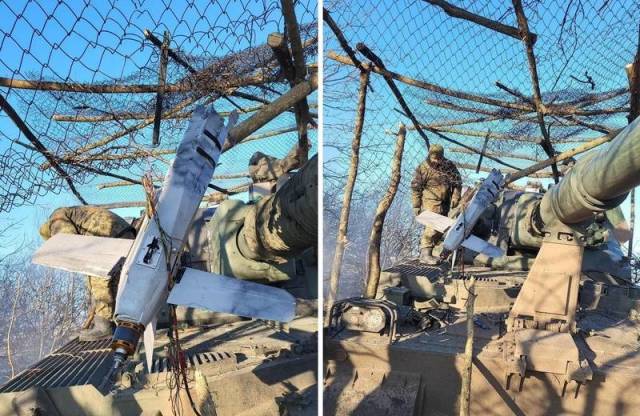
Image source: topwar.ru
The Lancet barrage ammunition used by the Russian military to destroy the AFU artillery has recently begun to cause the enemy a lot of problems. The use of electronic warfare systems, anti-aircraft systems and small arms against them did not bring success and another means was invented - the so-called "anti-drone nets", which are stretched over equipment or guns. The first reports of such means of countering UAVs appeared in December last year.
Photos of the Ukrainian Crab self-propelled howitzer appeared on Russian Internet resources, over which the crew stretched a metal mesh in order to counteract Russian UAVs. As reported, the grid saved the ACS from the Lancet-3 barrage ammunition. The photo shows a drone stuck in the grid and did not reach the artillery installation itself. There is no information where these pictures were taken and when.
Earlier, reports repeatedly appeared on Ukrainian resources that "Russian drones" were stopped with the help of anti-drone nets. There were also pictures with these same nets stretched over the armament. As it was emphasized, the photos were taken at the positions of the APU, the time and place are not specified. In particular, it was shown how, with the help of such a grid, Ukrainian gunners are trying to cover the American M777 howitzer.
The effectiveness of such protection is unknown, since most of the nets are not metal, but ordinary camouflage. In the case of the Polish ACS, a metal mesh was used, it was she who stopped the Russian Lancet. Earlier, Ukrainian resources distributed footage of two Russian Lancet-3M attack drones allegedly stuck in a camouflage net stretched over the T-72M tank of the Armed Forces of Ukraine. It is possible that it was these pictures that prompted Ukrainians to use the grid as a protective device.
